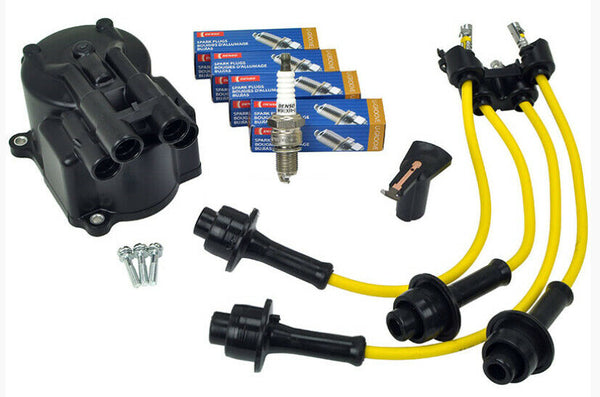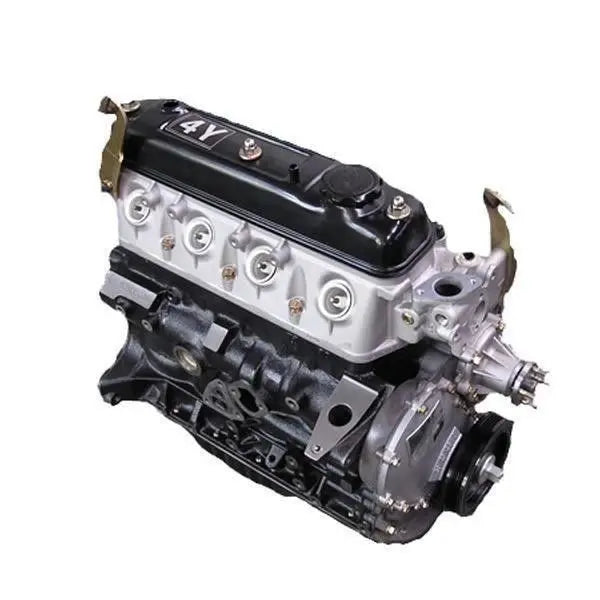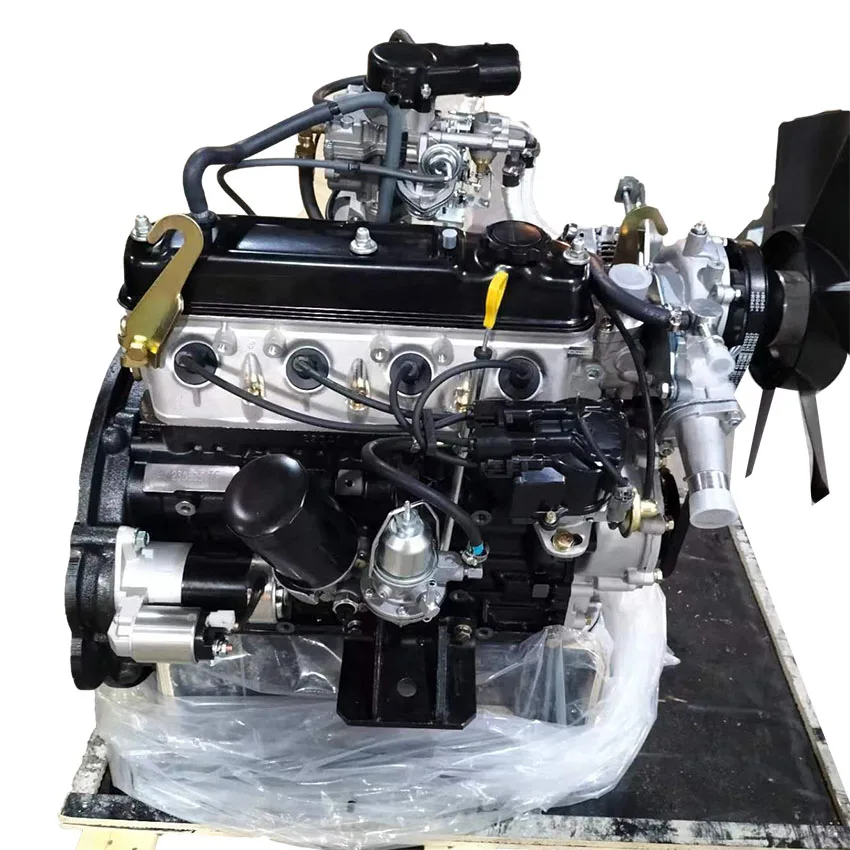Key Features That Make the 4Y Engine a Reliable Option for Drivers
Discovering the Different Types of Engine: Which One Fits Your Needs?
In the pursuit to establish the most appropriate engine type for your specific demands, it is important to assess the distinctive characteristics and advantages of each option readily available. Inner combustion engines remain to control as a result of their dependability, while electrical engines are gaining traction for their sustainability. Crossbreed engines use a functional concession, and diesel motor stand out for their power sought after applications. Additionally, different fuel engines existing ingenious services, albeit with specific constraints. Recognizing your priorities will certainly contribute in this decision-making process, bring about an exploration of factors that may influence your choice.

Internal Combustion Engines
Interior burning engines (ICEs) are the foundation of modern transportation, powering a substantial selection of automobiles from cars to aircrafts. These engines operate the concept of converting gas into mechanical power through a series of controlled surges within a combustion chamber. One of the most common sorts of ICEs consist of gasoline engines, diesel engines, and rotary engines, each created to fulfill particular performance and effectiveness requirements.
Gasoline engines generally make use of trigger ignition, while diesel motor depend on compression ignition, resulting in unique differences in fuel performance and power output (4y engine). Rotating engines, or Wankel engines, use a compact design and smooth operation, yet are less generally used in mainstream applications
ICEs have actually gone through significant developments in innovation, including the intro of turbocharging and fuel injection systems, which enhance total efficiency and efficiency. In spite of their performance improvements, ICEs face increasing scrutiny because of their environmental influence, specifically regarding greenhouse gas exhausts. As the vehicle industry progresses, the future of ICEs stays a subject of dispute, balancing efficiency, performance, and environmental factors to consider. They proceed to play an essential role in worldwide transportation infrastructure.
Electric Engines
As problems concerning environmental sustainability and nonrenewable fuel source dependency grow, electrical engines have actually become an engaging alternative to inner combustion engines. These engines utilize electrical motors powered by batteries or gas cells, offering a cleaner and more reliable motive powers.
One of the main benefits of electric engines is their decreased exhausts. Unlike standard engines that melt nonrenewable fuel sources, electric engines create zero tailpipe emissions, substantially decreasing air contamination and adding to improved public health and wellness. In addition, the performance of electrical motors frequently surpasses that of internal burning engines, converting a higher percentage of power from the source of power right into usable energy for activity.
Electric engines are likewise notable for their peaceful procedure, making them optimal for city environments. 4y engine. The simpleness of their layout causes less relocating components, which can cause reduced upkeep costs and raised reliability with time
However, challenges stay, including battery manufacturing influences, charging infrastructure, and range restrictions. In spite of these obstacles, the growing investment in electric car technology and renewable resource resources points towards an encouraging future for electric engines, placed to play an important role in the shift toward sustainable transportation.
Hybrid Engines
Blending the benefits of both typical and electrical internal burning engines, hybrid engines stand for a versatile solution in the pursuit for reliable and sustainable transportation. These engines combine a gas or diesel engine with an electric motor, allowing for boosted gas performance and lowered emissions compared to standard automobiles.
Hybrid engines run in numerous modes, using the electric motor for low-speed driving and the interior burning engine for higher speeds or when even more power is required. This dynamic procedure not only enhances fuel economic climate yet also adds to a smoother driving experience. Regenerative braking is another important attribute, catching energy generally shed throughout braking and redirecting it to charge the battery.

As customers increasingly focus on eco-friendliness, crossbreed engines stand apart as a useful selection, using an effective balance of efficiency, efficiency, and environmental responsibility. This flexibility makes them suitable for city travelling and long-distance travel alike.
Diesel Motor
Efficiency and power are characteristics of diesel engines, which have actually long been preferred for their robustness and fuel economy. These engines operate the principle of compression ignition, where air is pressed to a heat prior to gas is infused, sparking it without the need for ignition system. This procedure enables diesel motor to attain greater thermal you could try here performance compared to gasoline engines, equating into better fuel gas mileage and lower carbon dioxide exhausts.
Diesel engines are particularly appropriate for heavy-duty applications such as trucks, buses, and industrial machinery, where torque and longevity are extremely important. Their style normally includes more powerful components to withstand the greater stress created throughout operation, leading to longer solution life and decreased upkeep prices.

Alternate Gas Engines
While diesel engines have long dominated the landscape of sturdy source of power, alternative fuel engines are gaining grip as sensible options for a more lasting future. These engines utilize a variety of fuels, such as compressed natural gas (CNG), ethanol, lp, and hydrogen, intending to minimize greenhouse gas exhausts and dependence on fossil fuels.
One considerable advantage of different fuel engines is their possible to lower carbon footprints. CNG engines discharge fewer contaminants contrasted to standard diesel engines, making them ideal for city transit systems and fleets looking for to enhance air top quality. Ethanol, stemmed from biomass, not just lowers exhausts but additionally supports agricultural economies.
Hydrogen fuel cells represent an innovative development in this world, using zero-emission power with a chain reaction between hydrogen and oxygen. Nonetheless, challenges such as framework growth and manufacturing prices remain challenges to extensive adoption - 4y engine.
Conclusion
Interior burning engines use integrity, while electric engines focus on sustainability and minimized maintenance. Hybrid engines combine the advantages of both, boosting efficiency, whereas diesel engines give remarkable power and torque for sturdy applications.
Crossbreed engines supply a functional compromise, and diesel engines stand out for their power in demanding applications. The most usual kinds of ICEs include gas engines, diesel engines, and rotary engines, each made to meet details efficiency and efficiency needs.
Unlike traditional engines Read More Here that burn fossil fuels, electric engines generate no tailpipe discharges, significantly decreasing air pollution and contributing to enhanced public health and wellness.Crossbreed engines run in several modes, utilizing the electric motor for low-speed driving and the interior combustion engine for higher rates or when even more power is required. Crossbreed engines combine the benefits of both, boosting efficiency, whereas diesel engines supply remarkable power and torque for sturdy applications.